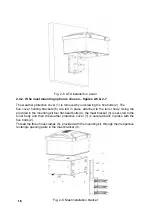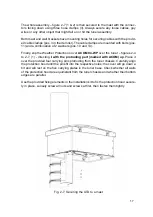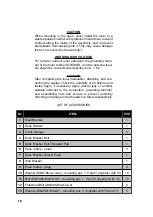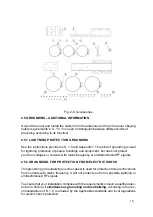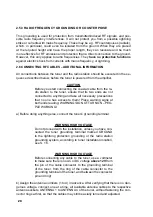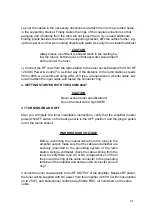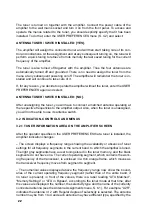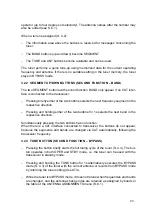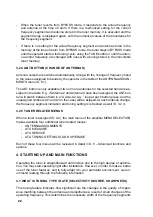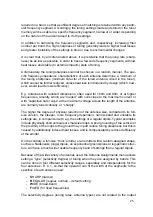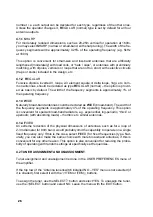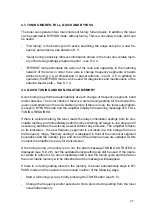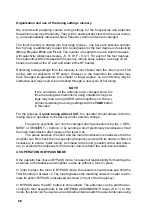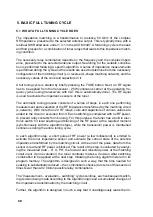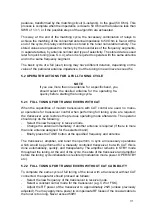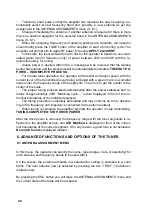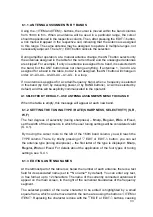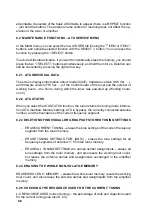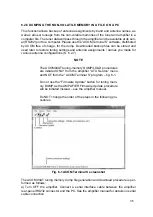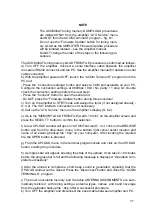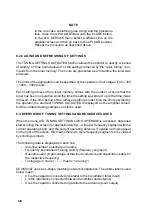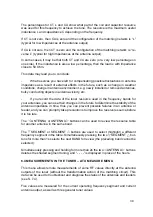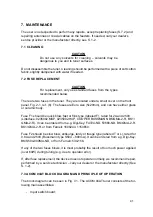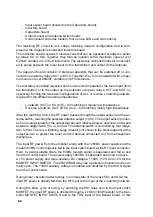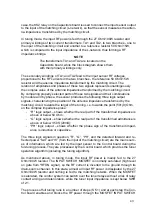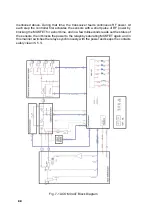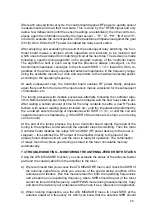
30
30
5. BASIC FULL TUNING CYCLE
5.1
WHAT A FULL TUNING CYCLE DOES
The impedance matching is a transformation to resistive 50 Ohm of the complex
RFimpedance, presented to the selected antenna output. This is typically done with a
residual SWR allowance under 1.3:1 in the ACOM 04AT. A full tuning cycle is the seek
and find process for a combination of tuner relays that leads to this impedance match
-
ing condition.
The necessary relay combination depends on the frequency and the complex imped
-
ance, presented to the selected antenna output. Searching for the suitable combina
-
tion is performed following a specific algorithm. A series of impedance measurements
is performed during the cycle and the results are used to determine both the necessary
configuration of the matching circuit (L or reversed L-shape matching network), and the
necessary values of the coils and capacitors in it.
A full tuning cycle is started by briefly pressing the TUNE button. Next, an RF signal
has to be applied from the transceiver - 25W continuous carrier at the operating fre
-
quency (when using transceivers with CAT this is automatically done). The RF signal
is used to activate the impedance sensors of the tuner.
The automatic tuning process consists of a series of steps, in each one performing
measurement and evaluation of the RF impedance transformed by the matching circuit
(L-network). With more than 20 RF relays, coils and capacitors of various values are
added to the circuit or excluded from it. Each switching is completed with no RF power,
to prevent relay contacts from burning. For this purpose, the tuner has a built in elec
-
tronic switch for local enabling and blocking of the RF power at the required moment
(synchronously with the algorithm steps), while the transceiver power is maintained
continuous during the entire tuning cycle.
In each algorithm step, a short pulse of RF power (a few millisecond) is emitted to
activate the tuner impedance sensor and evaluate the current state of the antenna
impedance transformed by the matching circuit. At the end of the pulse, data from the
sensor is read and RF power is blocked. The result of the step is evaluated by analyz
-
ing the measured data – R, G, PH, the forward and reflected power at the matching
circuit input. Upon evaluation, the tuner controller makes a decision what switching
combination to be applied at the next step, following the tuning algorithm stored in its
program memory. The algorithm is designed in such a way, that the time needed for
seeking is substantially reduced – the combinations checked are tens of thousands of
times fewer than all 2 million possible relay combinations.
The “measurement – evaluation – switching” cycles continue, each subsequent switch
-
ing decision being made according to the algorithm logic and accumulated changes of
the impedance transformation by the matching circuit.
Further, the algorithm is designed in such a way that it unambiguously leads the im
-
Summary of Contents for ACOM 04AT
Page 1: ...1 ...
Page 57: ...2 2 ...

